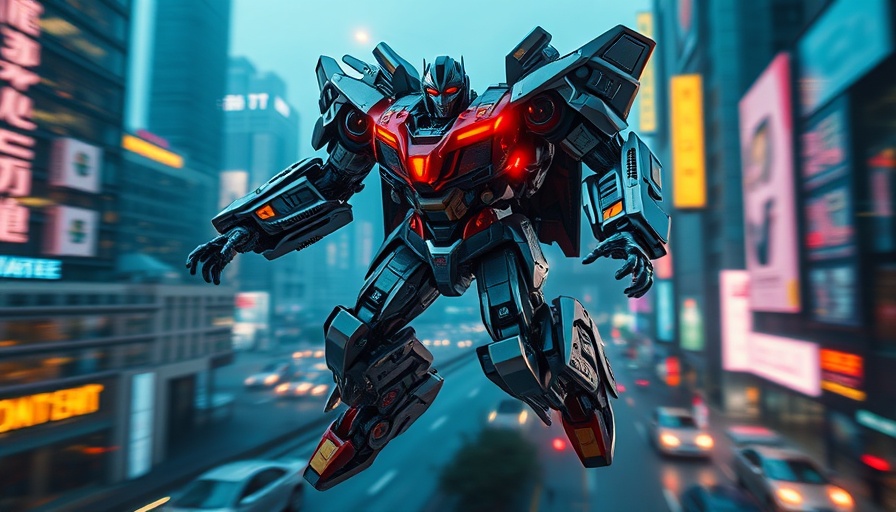
The Dawn of Mid-Air Transformation in Robotics
In a groundbreaking development for robotics, engineers at the California Institute of Technology have unveiled a unique flying and rolling robot known as ATMO, which is set to redefine our understanding of autonomous machines. Unlike traditional robots that need a solid surface to transition between flying and driving modes, ATMO can transform mid-air, seamlessly rolling away after landing without hesitation. This innovation opens exciting possibilities in various fields, particularly commercial delivery systems and robotic exploration.
Understanding ATMO’s Design
ATMO operates using four thrusters that provide the necessary lift for flight. Upon landing, the robot morphs its shrouded thrusters into wheels. Central to this transformation is a single motor that facilitates a joint mechanism, adjusting the device’s configuration between airborne and ground modes. As stated by lead researcher Ioannis Mandralis, the design draws inspiration from nature, paralleling biological transformations seen in animals.
Challenges of Mid-Air Transformation
While the ability to transform in the air brings newfound autonomy and robustness, it also introduces significant challenges. The complexities of aerodynamic forces at lower altitudes make transformation a delicate operation. ATMO must navigate these forces while adjusting its structure to manage lift and propulsion effectively. This complexity has been a persistent puzzle in aerospace engineering, highlighting the innovative nature of ATMO’s design.
Potential Applications in Real Life
Imagine a future where drones can deliver packages directly to your door or scout hazardous environmental areas without needing to land on an unstable surface. The versatility of ATMO signifies a leap toward these capabilities. With enhanced agility, it could perform more effectively in emergency situations, such as disaster response or search and rescue operations, particularly where ground conditions are unpredictable.
Connecting Robotics with Everyday Life
The notion of flying robots might seem like science fiction, but as advancements continue, their integration into daily life becomes increasingly feasible. In cities like Dallas, where lifestyle and technology converge, the introduction of agile robots like ATMO could change local delivery systems, merge with smart city frameworks, and enhance urban mobility.
The Bigger Picture: Impacts on Cost of Living and Lifestyle
As these technology innovations roll out, their implications extend to various lifestyle factors — including the cost of living. Cities grappling with logistical challenges may find solutions in Robotics for efficient transportation of goods. This could alleviate some economic pressures, like those seen in Dallas, where living costs continue to rise alongside urban demands.
Expert Opinions on this Robotic Breakthrough
Experts in the field, like Mory Gharib, suggest that ATMO’s technology could be instrumental in creating smarter, more efficient urban environments. The fusion of flying and rolling capabilities may inspire future designs in robotics, increasing their autonomy and effectiveness across multiple industries.
How You Can Engage and Learn More
For tech enthusiasts and industry professionals interested in the evolving landscape of robotics, following developments like ATMO is crucial. Engaging with insights into these technologies not only provides a competitive edge in the workforce but also a deeper understanding of how they will reshape our world.
As the world transitions into an era dominated by rapid technological advancements, the implications of innovations like ATMO are profound. Engaging with this technology could enhance your understanding of its impacts on modern urban living and beyond.
 Add Element
Add Element  Add Row
Add Row 



 Add Row
Add Row  Add
Add 


Write A Comment